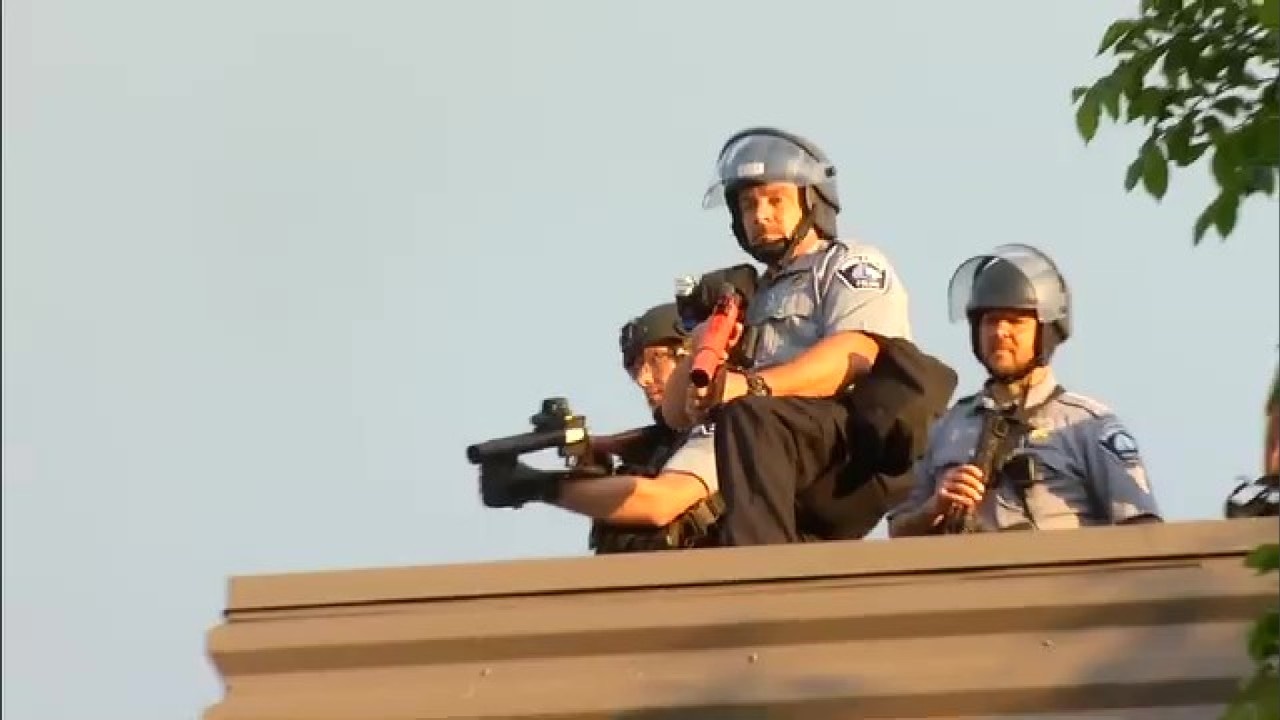Report finds little accountability after MPD officer shot protestors with rubber bullets
The thousands of rubber bullets that flew through the air after the murder of George Floyd were fired by officers who faced little to no accountability, according to an independent review of the city’s response.
A team of investigators hired by the City of Minneapolis presented their much-anticipated findings on Tuesday, which included how police failed to follow its own rules regarding the use and reporting of less-lethal force.
5 INVESTIGATES has reported extensively on MPD’s use of less-lethal force during the civil unrest that led to life-changing injuries and significant legal settlements.
Ana Marie Gelhaye is one of the people on the receiving end of such force. A rubber bullet struck her directly in the eye.
“My face was completely covered in blood,” she said in an interview with 5 INVESTIGATES last summer. “I’m clutching my eye, screaming for help. Just completely shocked.”

Minneapolis police officers hold rubber bullet launchers on a rooftop. (KSTP/file)
Gelhaye said that there was no dispersal order, curfew, or warning before the less-lethal rounds were fired.
Her experience mirrors what the findings laid out in the after-action review of the department’s response that found officers “did not seem to have consistent rules of engagement or control” when firing rubber bullets.
“We found that the officers that were supervising the individuals that had those weapons hadn’t been provided with rules of engagement,” said Chad McGinty, a former member of law enforcement who now serves as the senior director of Hillard Heintze, the auditing firm conducting the review.
McGinty’s team said it’s unclear who carried or used less-lethal weapons during the unrest because the officers didn’t report who actually pulled the trigger.
The authors of the report described it as a “low level of accountability,” confirming what 5 INVESTIGATES reported last August that the majority of officers who have been accused in federal court of using or approving excessive force have not been identified.
“It made us have to comb through body-worn cameras in order to find out the truth about what happened,” said Katie Bennett, an attorney at Robins Kaplan, who is representing clients in three separate cases involving the use of less-lethal force.
One of Bennett’s clients is Soren Stevenson, who lost an eye from less-lethal munitions. His case was settled last month for $2.4 million.
After reviewing the after-action report, Bennett said she wasn’t surprised.
“MPD is doing what it’s always done,” she said.
For its part, the city has said it’s already taking action.
In previous court filings, City Attorney Jim Rowader blamed the lackluster reporting of less-lethal force on “the situation that was facing officers at the time,” alluding to the chaotic and overwhelming nature of the unrest.
“I think at times like this, especially in reaction to the murder of George Floyd by Derek Chauvin, it’s even more important to do proper documentation and lay out all the material facts about what you’re seeing,” Bennett said of the city’s defense.
According to the team of investigators, Minneapolis police officers interviewed for the review acknowledged that their response to the unrest “did not go well.”
The findings on less-lethal force fit into the overall problems laid out in the report, including a lack of coordination, communication, and leadership.
The whole report can be viewed below: